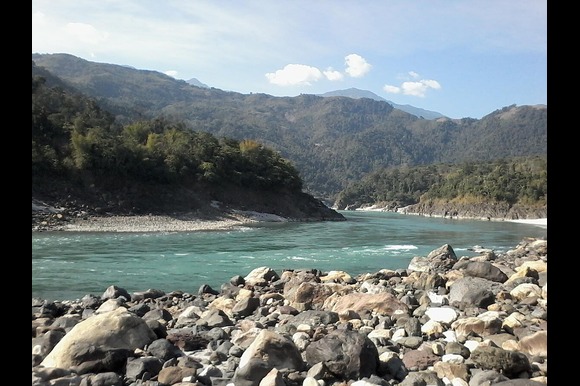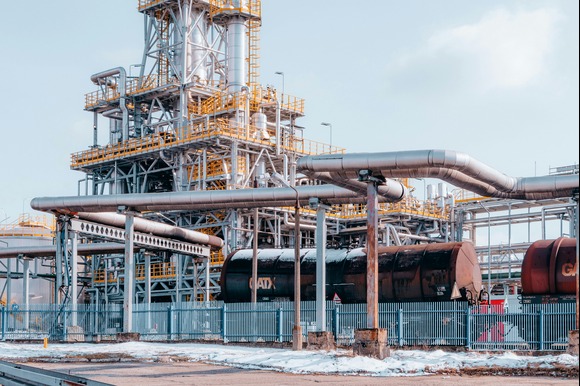
Gurtej Chauhan
India fears that a massive Chinese hydropower project planned in Tibet could slash water flows on a key river by as much as 85% during the dry season, according to a confidential government analysis and four sources familiar with the matter. The assessment has prompted New Delhi to accelerate its own plans for a huge dam in the country’s northeast, in what officials see as a measure of both survival and strategy.
For more than two decades, Indian policymakers have weighed proposals to manage the flow of the Yarlung Zangbo — which rises from Tibet’s Angsi Glacier and sustains over 100 million people in China, India, and Bangladesh. But those efforts have faced repeated setbacks, particularly fierce and sometimes violent opposition from residents of Arunachal Pradesh, who fear displacement and destruction of their way of life.
The debate intensified in December, when Beijing declared it would construct the world’s largest hydropower dam in a border county just before the river flows into India. Known as the Siang in Arunachal Pradesh and the Brahmaputra further downstream, the river is already at the heart of territorial and geopolitical disputes. Delhi now worries that China, its chief strategic rival, could weaponize control over the river.
In May, workers from India’s largest hydropower developer, NHPC, began moving survey equipment to a proposed site for the Upper Siang Multipurpose Storage Dam, escorted by armed police. If completed, it would be the country’s biggest dam. Prime Minister Narendra Modi’s office, along with senior officials, has since convened multiple high-level meetings — including one in July — to accelerate construction timelines, according to two sources briefed on the discussions.
A still-undated government analysis reviewed by Reuters, and corroborated by multiple officials, offers Delhi’s first detailed assessment of China’s plans. Although Beijing has not publicly disclosed construction specifics, India’s study draws on projections from institutions such as the Central Water Commission, and assumes the dam — already under construction since July at a cost of nearly $170 billion — will be able to divert as much as 40 billion cubic meters of water annually, more than a third of the river’s flow at a critical border crossing.
The report suggests the impact would be most severe during non-monsoon months, when rising temperatures parch much of India’s farmland. Without a countermeasure, water scarcity could cut supply to Guwahati — Assam’s largest city, reliant on agriculture and industry — by as much as 25%. With the Upper Siang project, the shortfall could be reduced to 11%, thanks to its proposed 14 BCM of storage capacity.
Beyond mitigating shortages, Indian planners believe the dam could act as a shield against sudden Chinese discharges of water, either accidental or deliberate. With strategic storage, the dam could absorb excess inflows, including potential floods triggered by Chinese infrastructure breaches. Sources said Delhi is considering a policy to keep 30% of the reservoir unfilled at all times as a buffer.
China, however, has dismissed such concerns. A foreign ministry spokesperson told Reuters that Beijing’s hydropower schemes are based on “rigorous scientific research on safety and environmental protection” and will not negatively affect water resources, ecosystems, or geology downstream. “China has always maintained a responsible approach to the development of transboundary rivers, and continues long-term cooperation with countries such as India and Bangladesh,” the spokesperson added.
India’s ministries of water and external affairs, as well as Modi’s office, declined to comment. NHPC did not respond to requests either. But Foreign Minister S. Jaishankar raised the issue directly with his Chinese counterpart on August 18, underscoring the scale of India’s unease. His deputy later told lawmakers that Delhi was pursuing “comprehensive measures” to protect citizens and livelihoods — including the dam.
India has also faced accusations of weaponizing water, particularly from Pakistan, China’s ally. Earlier this year, Delhi suspended its role in the 1960 Indus Waters Treaty and began exploring diversion of flows away from Pakistan, drawing international criticism and an adverse ruling from a tribunal — which India has rejected.
Meanwhile, tensions on the ground remain high. When NHPC workers attempted surveys near the village of Parong in May, local residents torched their tents, damaged equipment, and destroyed a bridge. Members of the Adi community, who cultivate oranges, limes, and rice in the fertile Siang valleys, have since set up patrol posts to block access roads. Security forces have resorted to trekking through remote forest trails at night to reach work sites.
Community leaders estimate that at least 16 villages — home to about 10,000 people — could be submerged by the project, with more than 100,000 indirectly affected. “The cardamom, paddy, jackfruit and pear we grow help us send our children to school and support our families,” said Odoni Palo Pabin, a local shopkeeper and mother of two. “We will fight the dam to death.”
Despite protests, the project has political support. Arunachal Pradesh’s chief minister, a member of Modi’s Bharatiya Janata Party, has described China’s dam as an “existential threat.” His government has endorsed the project, arguing it would guarantee “water security and flood moderation.” In June, state authorities began talks over compensation packages for affected families.
Some leaders, including Adi lawmaker Alo Libang, believe opposition may soften if residents are offered generous resettlement and financial aid. According to sources, Modi’s office has directed NHPC to spend at least $3 million on schools, healthcare, and infrastructure for displaced communities. In a sign of shifting attitudes, three villages recently agreed to permit dam-related surveys.
Still, India’s record on dam projects is fraught with delays, often slowed by local resistance and environmental challenges. Even with approvals, construction of the Upper Siang dam would likely stretch over a decade, meaning Beijing’s project — expected to begin producing power by the early-to-mid 2030s — would be operational first.
That time gap could prove dangerous. If China were to suddenly release water during monsoon seasons, Indian construction works could be washed away, sources warned. Experts also caution that both projects lie in one of the world’s most seismically unstable zones.
“The Chinese dam is being built in a region highly vulnerable to earthquakes, landslides, and extreme climate events,” said Sayanangshu Modak, a University of Arizona researcher on India-China water disputes. “These conditions raise serious concerns about dam safety. India must urgently engage with China to manage these risks — otherwise millions downstream remain exposed.”




